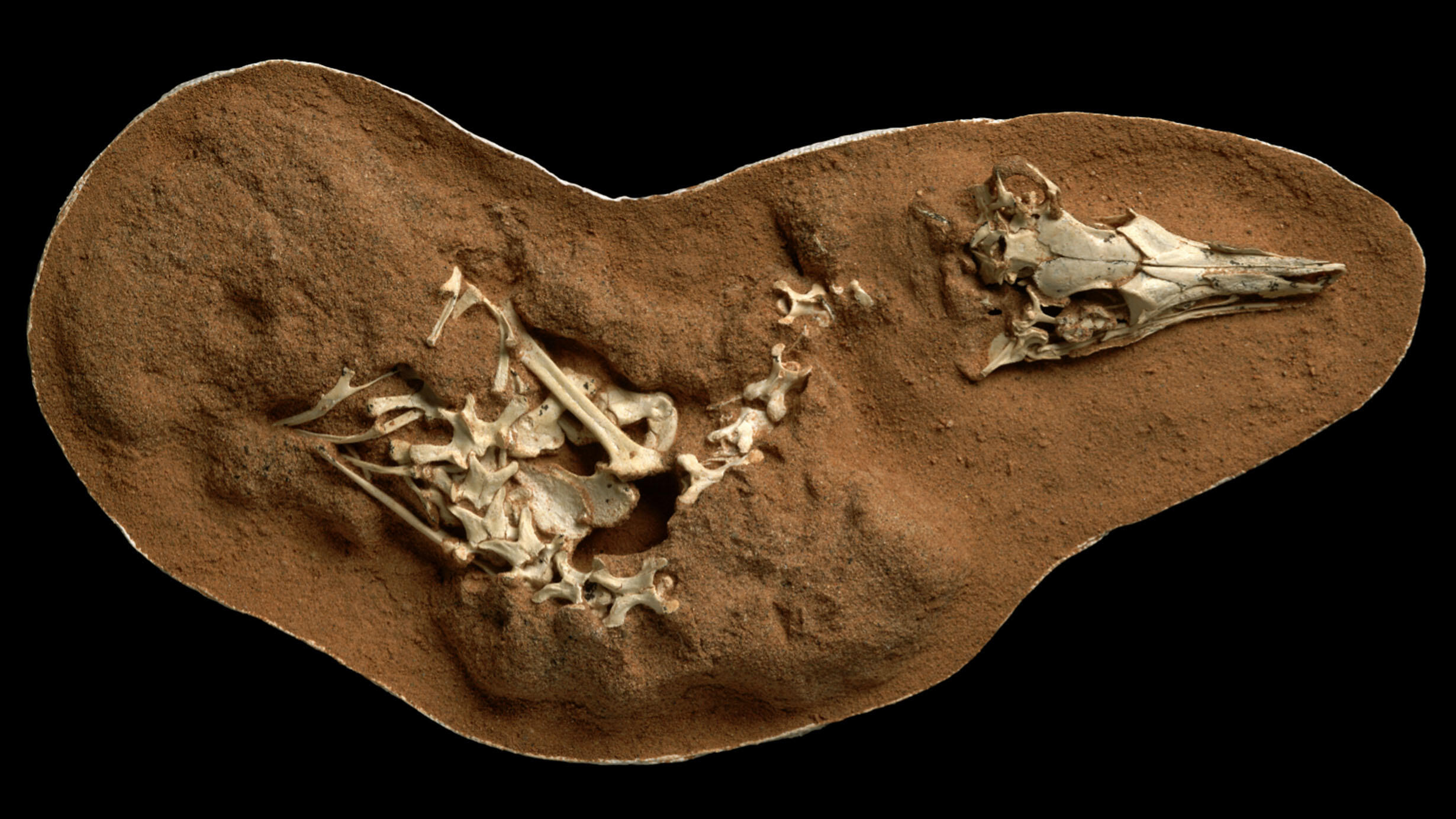 Fossilized Shuvuuia deserti skeleton.
Fossilized Shuvuuia deserti skeleton.Mick Ellison/©AMNH
New research that compares the vision and hearing abilities of dinosaurs and birds reveals that a small desert-dwelling dinosaur discovered by Museum and Mongolian scientists in the 1990s likely could have hunted in complete darkness.
“There are more than 10,000 species of birds living today on every continent, but only a small number have adaptations that let them hunt prey at night,” said Kimberley Chapelle, a Kalbfleisch postdoctoral fellow in the Museum’s Division of Paleontology and a co-author on the study, which is published today in the journal Science. “Scientists have long wondered whether theropod dinosaurs—the group that gave rise to modern birds— had similar sensory adaptations.”
The international team of researchers, led by the University of the Witwatersrand in Johannesburg, used CT scanning and detailed measurements to collect information on the relative size of the eyes and inner ears of nearly 100 living bird and extinct dinosaur species.
To measure hearing, the team measured the length of the lagena, the organ that processes incoming sound information, called the cochlea in mammals. The barn owl, which can hunt in complete darkness using hearing alone, has the proportionally longest lagena of any bird.
Mick Ellison/©AMNH
To assess vision, the team looked at the scleral ring, a series of bones surrounding the pupil, of each species. Like a camera lens, the larger the pupil can open, the more light can get in, enabling better vision at night. By measuring the diameter of the scleral ring, the scientists could tell how much light the eye can gather.
The team found that many carnivorous theropod dinosaurs such as Tyrannosaurus and Dromaeosaurus had vision optimized for day and better-than-average hearing, presumably to help them hunt. But a chicken-sized theropod named Shuvuuia had both extraordinary hearing and night vision. The extremely large lagena of this species is almost identical in relative size to today’s barn owl, suggesting that Shuvuuia could have hunted in complete darkness.
“I couldn’t believe what I was seeing,” said University of the Witwatersrand Professor Jonah Choiniere, the lead author of the study, who is also a Museum research associate. “Dinosaur ears weren’t supposed to look like that.”
In addition, the eyes of Shuvuuia had some of the proportionally largest pupils yet measured in birds or dinosaurs, suggesting that they could likely see very well at night.
Shuvuuia, which lived in the deserts of what is now Mongolia, also had a bizarre skeleton, including a fragile bird-like skull, brawny weightlifter arms with a single claw on each hand, and long roadrunner-like legs. This odd combination of features has baffled scientists since its discovery in the 1990s during a joint expedition of the American Museum of Natural History and the Mongolian Academy of Sciences.
©Viktor Radermacher
With the new data on Shuvuuia’s senses, the scientific team thinks that, like many desert animals, Shuvuuia would have foraged at night, using its hearing and vision to find prey like small mammals and insects, rapidly running down that prey with its long legs, and then prying the animals out of burrows or shrubby vegetation with its strong forelimbs.
“Nocturnal activity, digging ability, and long hind limbs are all features of animals that live in deserts today,” said Choiniere. “But it’s surprising to see them all combined in a single dinosaur species that lived more than 65 million years ago.”